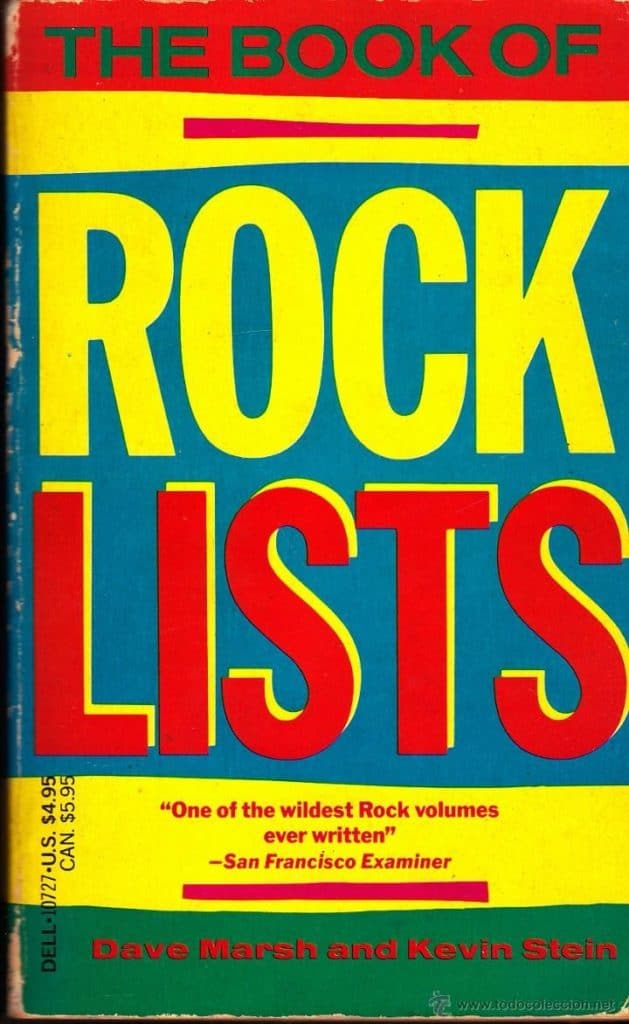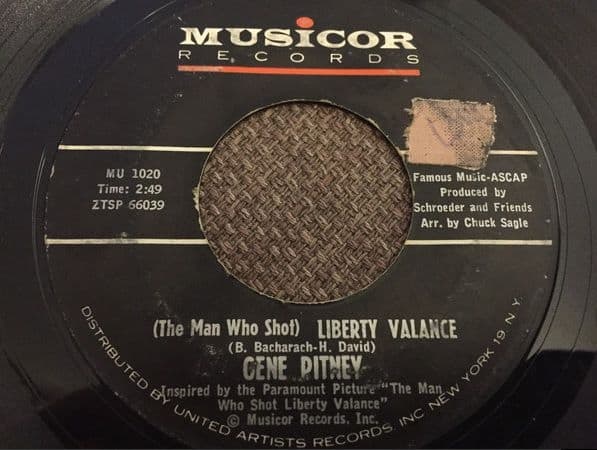In my wayward youth, before I accidentally found my true mission in life, I applied for a job at ASCAP – the American Society of Composers, Authors and Publishers. The position was Deputy Under Assistant to the Radio Associate or some such ridiculous title. The work required successful applicants to tune across the AM/FM dials and identify the music they heard on some official sheet so ASCAP could charge royalties to the station on behalf of itself… and oh yeah, its songwriters. Back then ASCAP was located in a brand-spanking-new building near Lincoln Center and as I got off the elevator and entered their fancy offices, I thought I could hear the walls screaming, like Zero Mostel in The Producers: “I WANT THAT MONEY!”
To get the job you needed a perfect score on a simple test: listen on headphones to a tape consisting of 15-second snippets of ten songs played consecutively, and correctly identify each tune. “Piece of cake,” I thought, because I was obsessed with pop music, in much the way some males get obsessed with baseball stats. In fact I used to maintain a huge binder containing the weekly Billboard Hot 100 charts. This obsession came with a price though: Billboard magazine was not cheap. Plus I had to take a subway to midtown to find a newsstand that carried it. And all because of the late-great Gene Pitney’s 1962 hit, “The Man Who Shot Liberty Valance.”
First, let me explain that the man who shot Liberty Valence was not the same man who appeared in a Rolling Stone magazine ad in 1968. That ad featured a grainy photo of proverbial long-haired youths lounging in a prison cell listening on headphones to a tape recorder. Underfoot were discarded signs reading “Grab Hold!” and “Music Is Love!” I gotta confess to this day I have never seen any such posters, but maybe they just never made it to Brooklyn. Below the photo were thumbnails of Columbia Records LP jackets for synthesizer albums nobody bought. The text alongside the photo of locked-up youth said stuff like “The Establishment’s Against Adventure,” and “Nothing can stop great sound makers like Stockhausen.” Above which, in heavy block letters, appeared this tag: “But The Man can’t bust our music. “
Second, The Man did bust “Liberty Valance,” a song the aging director John Ford so disliked that he nixed its use for the closing credits. The drums were too prominent or something. So, you can imagine my disappointment when I sat through that flick at the ancient Brooklyn Paramount just to hear the song and… nothing!
 During that summer of Liberty Valence, as a pimply teen, I earned some money house painting for The Man. And if you’ve ever painted or wall-papered or done some other repetitive manual job, you know the radio is an essential accessory. So, I fell in love with Liberty Valance. There was no record player in my ramshackle home, but that hit inspired me to buy a portable machine for $14.99 and lay down another 69 cents of my painting money for the 45 RPM. Despite the fact that the record store had it occupying one of their “Top 10” shelves, Liberty never appeared on the NYC radio countdown shows – even though the DJs boasted they based their lists on “local record store sales, NOT on national trade magazine charts.” How could that be?! When I learned what a “trade magazine” was, and then saw Liberty Valence sitting at #4 on the Hot 100 of the first Billboard I ever bought, I realized long before Rolling Stone that DJs were THE MAN. Also, THE MAN never mentioned the additional information provided in the Hot 100 lists, like who wrote each song. “Valance” was a Burt Bacharach tune according to Billboard and Bachrach was also listed as a composer for another song I liked on the chart, “Any Day Now,” by R&B legend Chuck Jackson. Wow! I was hooked!
During that summer of Liberty Valence, as a pimply teen, I earned some money house painting for The Man. And if you’ve ever painted or wall-papered or done some other repetitive manual job, you know the radio is an essential accessory. So, I fell in love with Liberty Valance. There was no record player in my ramshackle home, but that hit inspired me to buy a portable machine for $14.99 and lay down another 69 cents of my painting money for the 45 RPM. Despite the fact that the record store had it occupying one of their “Top 10” shelves, Liberty never appeared on the NYC radio countdown shows – even though the DJs boasted they based their lists on “local record store sales, NOT on national trade magazine charts.” How could that be?! When I learned what a “trade magazine” was, and then saw Liberty Valence sitting at #4 on the Hot 100 of the first Billboard I ever bought, I realized long before Rolling Stone that DJs were THE MAN. Also, THE MAN never mentioned the additional information provided in the Hot 100 lists, like who wrote each song. “Valance” was a Burt Bacharach tune according to Billboard and Bachrach was also listed as a composer for another song I liked on the chart, “Any Day Now,” by R&B legend Chuck Jackson. Wow! I was hooked!
So yeah, I was feeling kind of cocky as that ASCAP gal explained those fancy headphones. I was particularly strong on R&B, Country & Western and good ol’ rock ‘n’ roll. I could also name practically every tune Sinatra had crooned for the past decade. But Jazz was my weakest link. I knew Brubeck and Miles and some Coltrane and Parker, but I couldn’t go deep on jazz at all. Jazz was not Hot 100 stuff.
Well, I needn’t have worried. There was no jazz. But there were instrumentals. In fact they were ALL sappy instrumentals played by easy listening keyboard titans Ferrante & Teicher. After a while, the snippets all started to sound exactly the same. Is that the “Theme from the Apartment” or the “Love Theme” from Love Story? The “Theme from Exodus” or the “Theme from Lawrence of Arabia”? The “Love Theme” from the Jews in Exodus Dancing With the Arabs in Lawrence of Arabia? The Theme from This, The Love Theme from That, The Theme from the Theme, etc, etc, etc. About five themes in, I knew I was toast.
But nine years later my obsession with pop music eventually found its full flowering when a dear friend, Debbie Geller, who was taken from this earthly realm way too early, asked to borrow the crazy pop music lists I had created over the years. During some wonderful weekend afternoons in my Carroll Street garden apartment, I laid out my binders and notebooks and we talked about rock ‘n’ roll, imbibing some excellent spirits and spinning many a 45. Debbie was putting together a book for her boss Dave Marsh at Rolling Stone magazine. It was eventually published the next year as The Book of Rock Lists (updated in 1994 as The New Book of Rock Lists). Full Disclosure: I am mentioned in the acknowledgments before the late-great music journalist Chet Flippo only because the names were in alphabetic order.
The Book of Rock Lists was obviously a seminal work of the 20th century but frankly it could have been improved by using even more of my far-out lists. My favorite was “Bizarre Last Records,” which I defined as recordings that were released prior to an artist’s death but which gained eerie relevance because of the title. For instance, on the day Hank Williams died, he had a #1 Country & Western hit, “I’ll Never Get Out of This World Alive.” And R&B artist Chuck Willis had a two-sided chart hit when he died, “What Am I Living For?” backed with “I Don’t Want to Hang Up My Rock & Roll Shoes.” I ranked the records, of course, because countdowns still rock. Coming in at #1 was Sam Cooke’s masterpiece, “A Change Is Gonna Come.”
On a whim, I just Googled “Bizarre Last Records” and found only one reference to it: Martha Hume singled it out in a New York Daily News review for her weekly music feature in October 1981. Martha was the late-great wife of Chet Flippo. Isn’t Life Strange? (Moody Blues, peaked at #29 on the Hot 100, June 1972.)










